Spring: My Plants Are Not Doing Well
Spring: My Plants Are Not Doing Well
Why isn’t my cherry tree flowering? Why aren’t the rhodys producing many blooms? Why did my tree start to leaf out only to collapse? Why are my hydrangea leaves suddenly wilted?
These are some of the questions our customers are asking recently. We’ve understood that the rollercoaster temperatures in January and February have done damage to or killed butterfly bush (Buddleia), lavender (Lavandula), roses (Rosa), heath and heather (Calluna and Erica), and crape myrtle (Lagerstroemia). But now people are seeing more damage, not from that plunge into sub-zero temperatures, but from last summer’s drought.
Why isn’t my cherry tree flowering? Normally in May the Kwanzan cherry trees (Prunus ‘Kanzan’) are covered with bubblegum pink flowers as pictured below. This spring, however, many people aren’t seeing many blooms on their trees. These trees form the germ of their flower buds the summer before, and last summer it was so hot and dry for so long that many of those buds just dried up before fall. Even trees in irrigated landscapes suffered, because most irrigation systems don’t water deeply enough over a wide area to keep roots alive in prolonged drought. What can you do to help for next year? An inch of compost spread around the tree past the drip-line can help, along with an inch of mulch on top of that compost. If local water-restrictions allow, water the area around a tree deeply every two weeks.
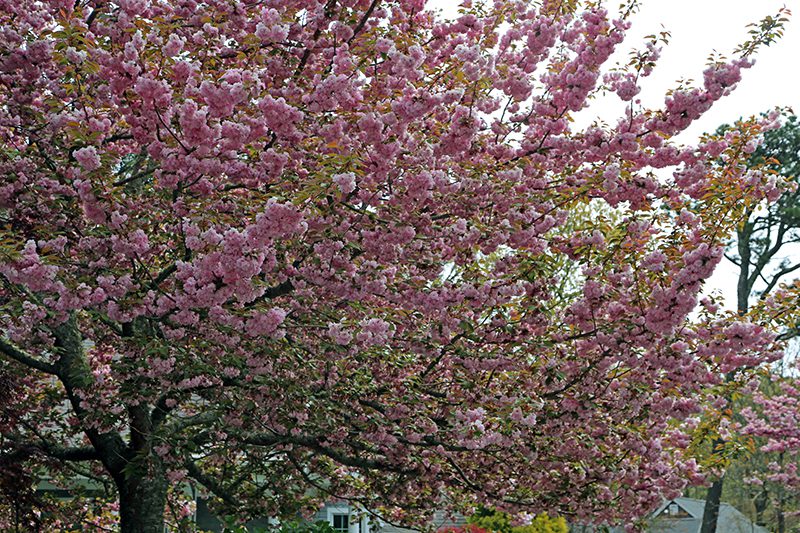
My Rhododendron isn’t flowering well…it should be in full bloom now! Rhododendrons also form their flower buds the summer before. Last summer many of the buds on these plants began to grow, only to dry up in the hot weather. You may see that some of your plants are flowering well, while others have toasted flower buds. This could be because some of those plants didn’t get as much water last year, were growing in soil that is more sun or sandier soil, or because that particular variety is less drought-tolerant. Like the advice for the cherry trees above, a layer of compost and regular watering (deeper less often…those “20 minute cycles” do little in hot, dry weather!) can help going forward.
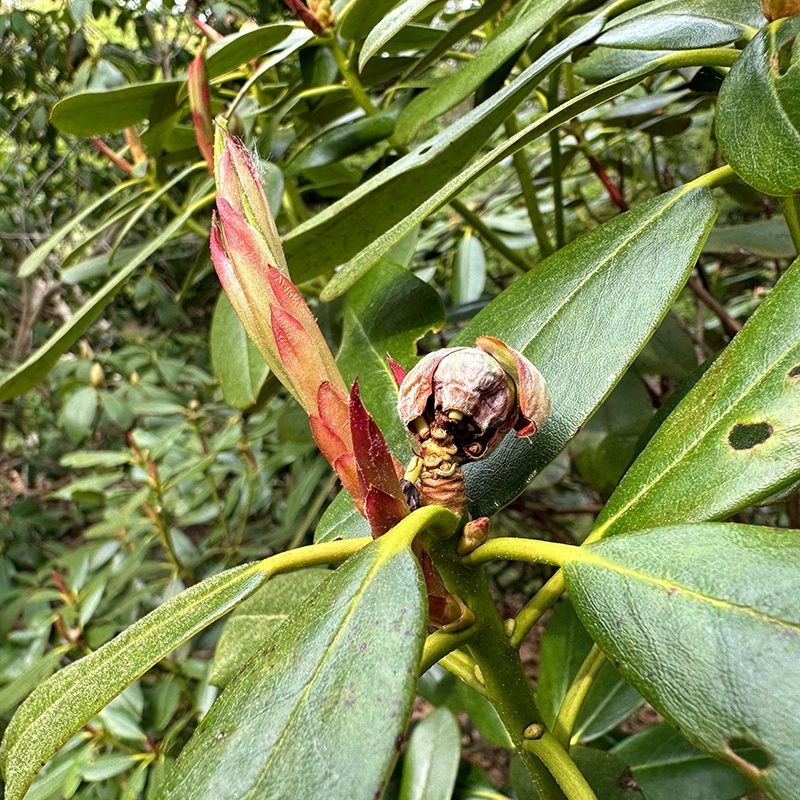
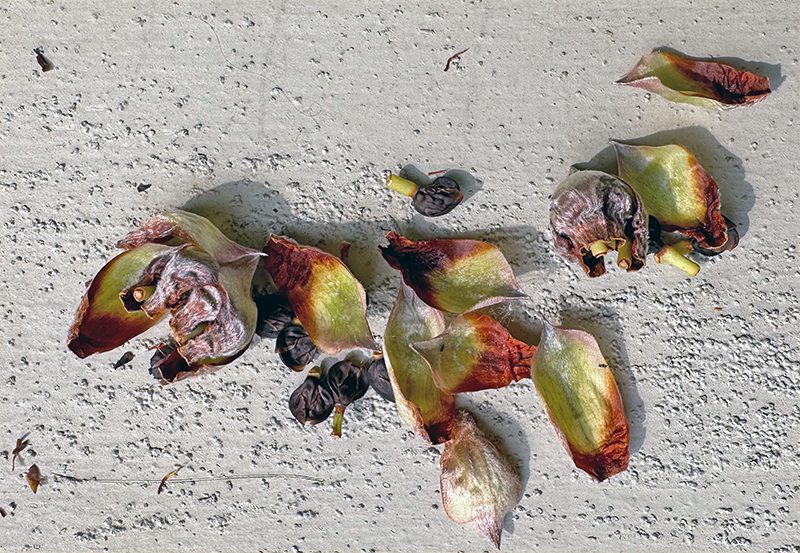
I’m seeing dead branches on my Rhododendron. Did they suffer from the cold this winter too? This damage is more likely due to the drought in 2022. Cut off the branches that are clearly dead. If it seems like some leaves are still green, leave those stems and watch to see if new foliage comes out over the next month. Again, a layer of compost or composted manure can help keep the soil healthy and hold moisture in the ground this season.
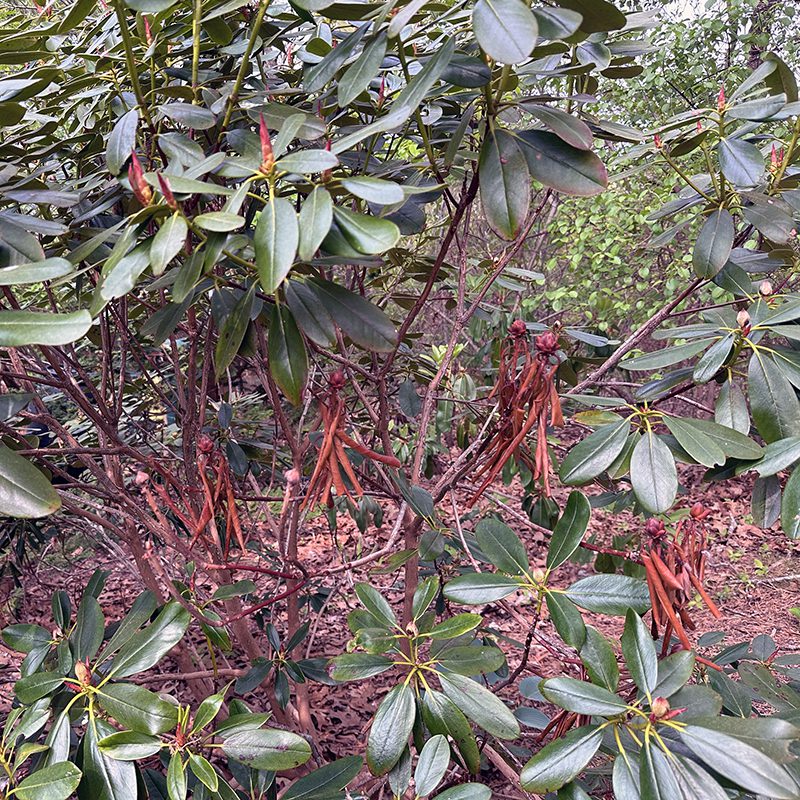
My shrub/tree started to leaf-out but now that new growth has wilted and died. What happened? We’ve seen dogwoods and maples with this problem, and some hydrangeas as well. The plants start to push out new leaves but after a few weeks those collapse and die. This happens when the plant is using what energy it has in the stems to try and break dormancy, but the plant has been damaged so badly that it can’t sustain that growth. In the case of the trees, the damage was to the roots during the drought last summer…the root systems dried up and died back, so the plants can’t support the attempts at life up above. Some of these trees may have a few branches that are alive and others may but up shoots from the base of the plant later this summer. At this point in the season, a wait-and-see approach is the best.
On our blue Hydrangeas the situation is similar…some of the buds formed last year seemed to make it through the winter, and we rejoiced because that’s where the flowers will be produced on those plants this summer. So we’re heartbroken when in late-May we notice that the plant suddenly drops all of that growth. Most of these Hydrangeas have strong, vital growth coming from the base, so they will be just as large by mid-summer, even if they’re not flowering well. The plant has “decided” to put its energy into the growth from the bottom, not into the development of the few buds on the old stems. Clip those old canes out since they will not produce new leaves from those stems.
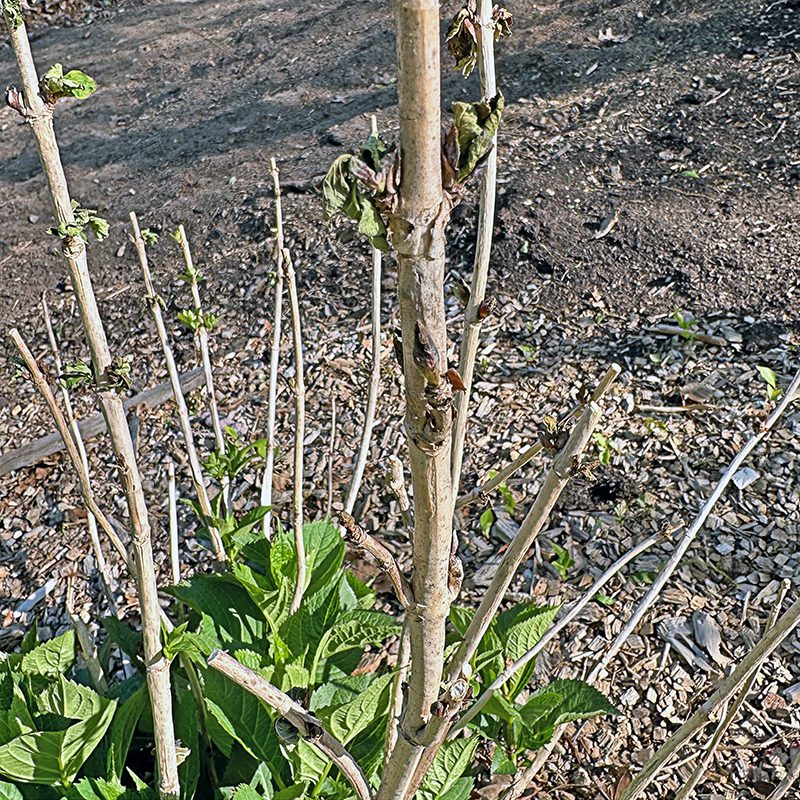
To help your plants in the future, know that regular applications of organic matter on the top of the soil can help. This could be an inch or two of compost, composted manure, or mulch. (Do not cover the ground with peat moss – that forms a crust that repels water.) Set your irrigation systems to go off for a longer period but less often. It’s impossible to give people an exact length of time since all systems and water-pressure levels differ, and local regulations about watering vary as well. We can advise that everyone use their eyes and brain when it comes to their irrigation: after a one week dry period, turn on your irrigation and let it run for an hour, then go out to the area you’ve watered and dig down with a shovel to see how moist the soil is. Check several places so that you know how well the irrigation is covering large areas. You want to see that the soil is moist down at least 10 to 12 inches. If you see that the soil isn’t very well saturated, you’ll know that your system needs to run longer in order to water well. A deep soaking once a week is enough for most established plants.
Another note about irrigation: drip systems are typically set up with a ring around each plant when the plants are small. Those rings often aren’t anywhere near a mature plant’s root system, however, so your drip system that was installed a few years ago may not be adequate for older plants. Know that root systems typically extend well beyond the drip-line of shrubs and trees.
3 Comments
Leave a Comment
Subscribe To Our Newsletter
Sign up for our weekly email about sales and events.

Very informative. I have nearly all of these issues in my gardens. I will make the best of this season and be better prepared for next year. Thank you!
Is a mixture of topsoil and manure equal to compost and manure as regards effectiveness in treating my rhodyss and Kwanzan Cherry? Also should the bowls of both be filled with water once a week or twice a week?
I’m not sure why you’d use topsoil since you don’t want to build up soil around these plants. The inch or two of compost is what you want because that works its way down into the ground where the microorganisms that help plants grow live. Filling a bowl around a plant is seldom enough because you’re not watering where most of the roots are. Roots extend well beyond the dripline of a shrub or tree. You will want to water that entire area with a sprinkler, not by hand-filling a bowl. Put a rain gauge there to see how long it takes to deliver over a half-inch. (You need a gauge, not a can or bucket since those don’t measure cubic inches of rain.)